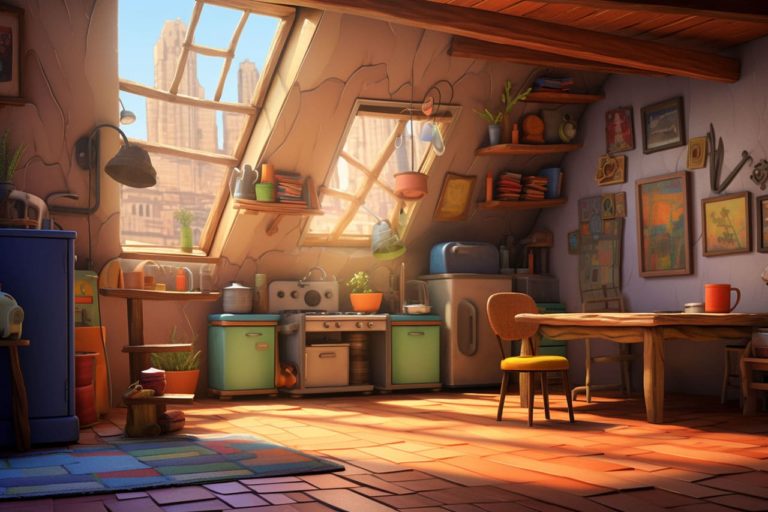Art doesn’t stand still. It twists, pulses, digitizes, grows roots, and occasionally starts dancing in the streets. As our world evolves, so does the way we express and interpret it. The following five emerging art styles aren’t just trends—they’re creative movements that are reshaping what art can be. Whether you’re a gallery regular or a curious newcomer, these styles are worth keeping on your radar.
1. Kinetic Art: Where Sculpture Comes to Life
Picture a sculpture that breathes, sways, and pulses like a living organism. That’s the magic of kinetic art—art powered by motion. Sometimes it’s wind. Sometimes it’s motors and sensors. But always, it’s movement that transforms how we see and interact with the piece.
Take the work of Reuben Margolin, for instance. His mesmerizing wave machines use hundreds of moving parts to create flowing, meditative rhythms that ripple through space. Watching them is less like looking at a sculpture and more like being pulled into a dream made of geometry and physics.
Why it matters: Kinetic art invites viewers to move, observe, and participate. It’s physical, hypnotic, and impossible to ignore.
2. Neo-Mannerism: Drama Returns, With a Twist
Neo-Mannerism revives the theatrical flair of the late Renaissance—only this time, it’s glitchier, weirder, and infused with irony. Think elongated limbs, intense colors, and over-the-top emotion, served with a knowing wink.
Australian painter Lucas Grogan turns this aesthetic into something electric. His bold patterns, irreverent humor, and graphic style pull influence from everywhere—religious iconography, folk art, and tattoo design—to create works that feel both ancient and very, very now.
Why it matters: In a world craving meaning and style, Neo-Mannerism gives us both—plus a little mischief.
Biomorphic Art: Nature Reimagined
Biomorphic art mimics the shapes and flow of the natural world—undulating lines, cellular structures, fluid forms. It’s not about copying nature. It’s about channeling its energy and evolution.
German artist Monika Grzymala builds immersive installations using unconventional materials like tape and paper. Her work doesn’t hang on walls—it invades them, stretching across rooms like fungal networks or neural pathways. Step into one of her pieces and you’ll feel like you’re inside an organism, not a gallery.
Why it matters: Biomorphic art bridges biology and emotion. It feels alive—and often, it is.
4. Digital Realism: The Pixel Becomes Paint
At first glance, digital realism may look like traditional painting—but take a closer look and you’ll find pixels instead of brushstrokes. Artists in this space use software, tablets, and 3D modeling to create hyper-realistic images that often blur the line between what’s real and what’s rendered.
Canadian artist David McLeod exemplifies this craft. His works—glossy, luminous depictions of landscapes and wildlife—are so detailed they feel more vivid than life itself. He mixes digital sculpting with painterly sensibilities to produce art that’s simultaneously familiar and futuristic.
Why it matters: As digital tools become more powerful and accessible, realism is being redefined on a pixel-by-pixel level.
5. Social Practice Art: Art That Does Something
Some art hangs in museums. Some takes to the streets. Social practice art is rooted in community and built around collaboration. It’s about using creativity to tackle real-world issues—climate change, social justice, inequality—and often takes the form of public installations, workshops, or performances.
Nigerian artist Jelili Atiku is a powerful voice in this movement. His politically charged performances—often staged in public spaces—confront themes of violence, identity, and human rights. His goal? Not just to spark awareness, but to catalyze real change.
Why it matters: Social practice art doesn’t just reflect society—it tries to shape it.
What’s Next?
These five styles are just a glimpse into the wild frontier of contemporary art. Want to explore more?
- Follow artists like Grzymala and Atiku on social media to see their process in action.
- Visit digital art platforms like ArtStation and Behance to discover rising talent in digital realism.
- Look for public art in your city—you might already be walking through a social practice project.
The boundaries are blurring. The definitions are shifting. And the future of art is moving, morphing, digitizing, and demanding to be seen. You don’t need to be an art historian to be inspired. Just bring your curiosity.
